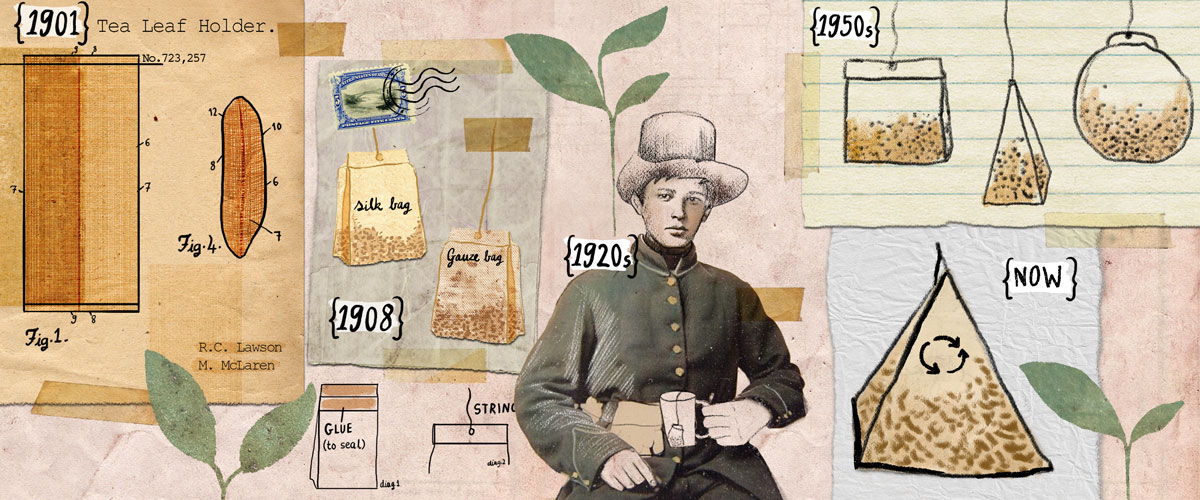Teabags don’t grow on bushes. The challenge is to make the tea taste as if they do. There’s a long way to go. Teabags today are a set of compromises in the trade off between convenience versus tea quality and a battle between bag and water. Five or so years ago there really weren’t many differences among them. Now, the choices are expanding, from even worse to very much better. The touchstone is to combine the convenience of the bag with the quality of whole leaf tea.
Most tea drinkers take the bag as a given. That’s not a great idea. Here are just a few questions where ignorance may be bliss but not healthy or money-wise: Which teabag materials contain known carcinogens? When are “natural” ingredients anything but? If you want the best quality and flavor, why should you first look at the shape of the bag? What are the technological and production innovations that are most promising in refocusing the historical mystique and heritage of tea?

I deliberately wrote this post before trying Teabox’s new TeaPacs. I wanted to make the piece unbiased and free of any implicit marketing. My goal is to brief you on teabag materials, ingredients and brewing characteristics. I do share the opinion of an earlier Still Steeping blogger, Ian Bersten, expressed a year ago, though he is much nicer than I am: “It is very difficult to find any consumer experience that is worse in the year 2015 than in the year 1900. Teabag tea is the only one I can think of.” The post is titled Why Teabags Will Never Beat the Real Thing.
Scott Fitzgerald told us that 3 a.m. is the dark hour of the soul. No, it’s 5 o’clock in an airport motel gazing at a table of styrofoam cups, a water sorta-heater, a bowl of powdered creamer. And a tray of teabags. Never does “Oh, hell” carry so much meaning.
Here are four from Big Name brand bag ingredients’ list.

Does “never” still apply? What does 2017 look like?
The path towards bags and pouches that offer tea comparable to good grades of whole leaf is fairly clear in outline. The list below summarizes the mass market status quo of today – Basic – and the emerging innovations and quality improvements – Best. Each of them is a subject in itself but the table makes the broader picture clear.

The path from tea bags “never” replacing whole leaf to being a good enough complement and alternative to maybe becoming the new norm requires a material and shape that permit the tea to expand and release its flavors. The tea should be whole leaf of superior quality, not the finely ground pieces and dust that has a large surface area so that its full taste flows quickly from bag to pot or cup. It should be fresh and real “leaf.” It should be price competitive without compromises in tea or bag cost, material and safety. It should be honest and accurate in its name and description, including its real source, not exploiting the loose rules of re-exporting and country of origin that disguise low level tea as a premium product.
It’s all about the leaf. Which of these would you prefer?
Featured illustration by Tasneem Amiruddin

